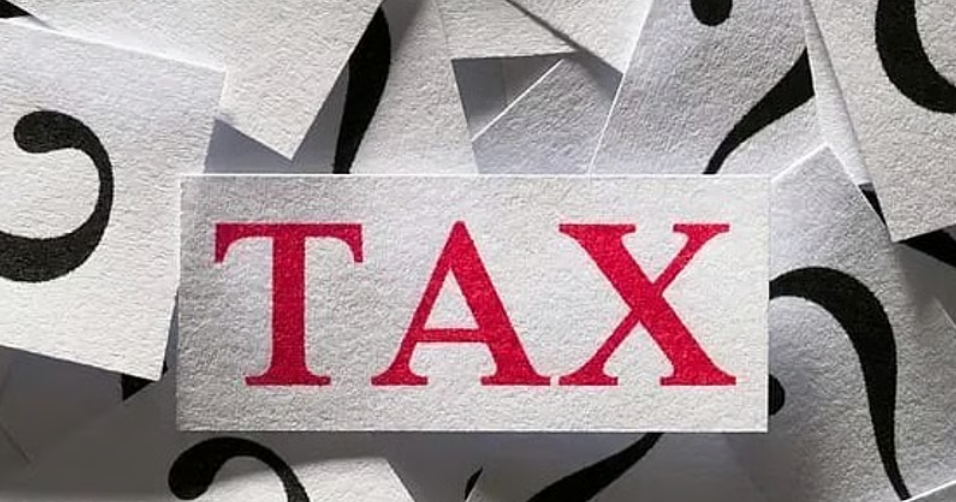Why India Needs to Reform Its Tax Laws Immediately
The cliche does not begin to capture the reality of what it is like standing in a long line at a government office, papers in hand, trying to determine which form to fill and what rule might pertain to you. Now imagine that confusion multiplied a hundredfold, and you will have an inkling of India’s tax system. Thousands of crores in potential tax revenue is lost every year as a collective consequence.
For variety and richness, it’s hard to beat India: With more than 60 different taxes, countless forms and rules that seem to change annually, millions of Indians labor just to pay what they owe the government. It’s not only maddening—it’s holding back our entire economy and making law-abiding citizens feel like they’re being punished for doing the right thing.
The Corrupted Indian Tax Web
India’s tax laws are an old house with too many renovations. Every government adds a room here, patches a wall there, without anyone asking whether the foundation still makes sense. The Income Tax Act is now more than 60 years old and its age shows in every complexity, clause and defunct provision.
Today a normal Indian taxpayer has to manage an income tax, GST levy (if he is in business), property tax and even profession tax are some of the other levies. It brings with it its own set of rules, deadlines and penalties. No wonder India comes 115th in the World Bank’s index of “Ease of Paying Taxes,” out of some 190 countries.
Average Time to Observe and Comply with Tax Obligations
243 Hours – A year for a medium sized company in India
The Puzzle No One Can Solve
Overburden of Rules and Lack of Clarity
Over 4000 amendments have been made to the Income Tax Act since 1961. That’s an average of more than 60 amendments per year! Each amendment has introduced new sections, sub-sections and explanations that even tax professionals find hard to wrap their heads around.
Think of it this way: a small business owner in Mumbai needs to find out how much they owe in taxes. They have to, for instance, determine what will be their tax slab and compute deductions under Section 80C and 80D as well as under a host of other sections; they must find out if there is any advance tax they need to pay; fill multiple forms many times over during the year. A single error, no matter how innocent, may incur penalties and letters from the tax department.
Real Example: In 2024, the tax department sent notices to several thousand senior citizens for not filing returns when their pension income was below taxable limits. The confusion stemmed from convoluted guidelines on TDS (tax deducted at source) and filing mandates.
Multiple Departments, Multiple Headaches
Before GST arrived in 2017, businesses had to deal with central excise, service tax, VAT, entry tax and luxury tax — all being so many departments meant to collect the taxes. While GST led to things getting streamlined in some level, the problems with complying still persist. There are still a large number of small and micro-businesses that fight GST compliance, returns filing as well as input tax credit claims.
| Tax Type | Who Regulates | Main Grouse |
|---|---|---|
| Income Tax | Central Government | Confusing calculations and frequent alterations |
| GST | Central + State | Multiple return filings, technical errors |
| Property Tax | Local Municipal Bodies | Varying rates in each city |
| Professional Tax | State Government | Differs from state to state, more compliance burden |
Honest Taxpayers Feel Cheated
In fact, one of the biggest problems with India’s current tax system is that it penalizes people who try to do the right thing. Let me explain.
India has a population of around 145 crore, but only around 8 crore people file income tax returns. Of these, only 2.3 crore people even pay any tax at all. That is less than even 2% of Indians pay the income tax. By contrast, those who honestly declare their incomes shoulder big tax rates — as much as 30% plus surcharge and cess, with the effective rate even exceeding 42% for high earners.
The Burden Falls on Few
It is the salaried employee who has to face the brunt of tax. For, their income is reported by employers and taxes are deducted at source (TDS), hence, it is impossible for them to evade taxes. Cash businesses and self-employed professionals, meanwhile, can underreport their income far more easily. This results in a highly inequitable system where honest middle-class workers are effectively subsidizing tax evasion by others.
For expert legal guidance on tax compliance and reforms, visit zistalegalis.com.
Who Pays Income Tax in India?
- Salaried Individuals: 70%
- Self-employed: 18%
- Businesses: 12%
Penalties That Don’t Make Sense
The penalty regime in Indian tax law at times appears more of a money-minting tool, than one to promote compliance. A late filer missing the deadline by a single day is treated as if he or she were a tax cheat. Interest on unpaid tax is 1% a month; that’s 12% for you civilians, more than you’d pay in most loan rates at the bank.

The Cost of Complexity
Money Wasted on Compliance
Companies and individuals spend billions of rupees a year just to be able to comply with tax laws. They retain chartered accountants, tax consultants and lawyers not to minimize their taxes but just to make sense of what they owe and file correctly.
According to the National Institute of Public Finance and Policy, compliance cost on account of GST itself is ranging from 2% to 4% of turnover for small businesses. For as small a shop-owner, who earns ₹50 lakh annually, this is the equivalent of spending up to ₹2 lakh just on tax compliance — which could instead have been used for scaling the business or hiring more hands.
Innovation Takes a Back Seat
When entrepreneurs spend more time stressing about tax compliance than creating their products, the entire economy takes a hit. Tax complexity is one of the biggest pains for startups in India. Founder time spent dealing with tax is not time available to innovate, serve the customer, and grow your business.
Projected Loss of Revenue due to Tax Evasion
₹5.5 Lakh Crore – Annually, according to government estimates
What Needs to Be Done
Simplify the Tax Structure
More than dozens of deductions and exemptions, what India needs is a simple tax system. The new tax regime enacted in 2020 was a move in that direction, featuring less in the way of deductions and lower rates. But it should be the single system, not an option that just introduces further confusion.
Already, countries like Estonia have demonstrated what is possible. It’s so simple that 95% of citizens pay their taxes online in under five minutes. It is simplicity on that model that India should be striving for.
Widen the Tax Base
And rather than getting more out of India’s existing taxpayers, it needs to bring more people and businesses into the formal economy. This means:
- Improved monitoring of cash above a certain threshold
- Incentivizing digital payments which generate automatic trails
- Easier registration for small businesses
- Amnesty plans that persuade informal businesses to become formal without fear of past infractions
Use Technology Smartly
The government has improved online filing and systems like the GST Network. But these services typically crash at peak hours and have cluttered interfaces. India also needs to invest in better technology:
- Pre-filled returns to account for data the government already has
- Provides real-time help and guidance
- Runs well even when busy
- Aggregates many taxes into one dashboard
Fair Treatment for Everyone
There ought to be a difference between honest error and willful fraud in any tax law. Somebody who makes an honest mistake should not receive the same consequences as somebody hiding income intentionally. Penalties should be proportional, and there should be cheaper ways to address errors rather than through costly appeals.
| Problem | Current Status | Desired Change |
|---|---|---|
| Tax structure | Two alternative regimes (old and new) | Single regime with 3-4 tax rates |
| Return filing | Collection of detailed information, Multiple forms | Pre-filled return, single form |
| Filing compliance | 243 hours each year | Less than 100 hours per year |
| Dispute resolution | Takes years | 6-month fast-track tribunal |
Learning from Global Examples
India needn’t reinvent the wheel. However, many countries have overhauled their own tax systems:
New Zealand’s Simple Approach
New Zealand has one of the world’s easiest tax systems. And for most people who work for wages, many don’t even need to file a return — the right amount will have been deducted at source and that’s it. Compliance obligations for businesses are minimal, and the tax department spends a lot of time holding hands, rather than threatening intimidation.
Singapore’s Efficient System
Singapore’s tax filing is less than 15 minutes for most people thanks to pre-filled returns with all the required information. This is a 100% online system that is very easy to use and support comes with some of the best customer service in the industry.
For more insights on international tax systems and reforms, check out the OECD Tax Policy Centre.
What India Can Adopt
India could implement:
- Pre-assessment systems where the tax department comes up with what you owe based on information that it already holds
- Shortened codes vs Long Legal Speak
- Single tax identifier that functions across all taxes
- Service standards and response times in taxpayer charters
Economic Impact of Tax Reform
Overhauling India’s tax system isn’t merely a matter of convenience — it is about economic growth. When businesses have to spend less time on compliance, they can invest more in expanding and creating jobs. As tax evasion falls, law-abiding taxpayers are able to pay less and the Treasury collects more.
A tax system that is simpler and more fair would:
- Increase GDP through moderation of the complex compliance deadweight loss
- More jobs as business focus on growth, not paperwork
- Increase the tax-take by adding actual people to the formal economy
- Take India up in ‘ease of doing business’ index internationally
- Corruption can be reduced by reducing discretion as well as human interface
What experts say: Simplification of the laws is likely to add 1-1.5% to India’s GDP growth rate per year by curbing compliance costs and promoting formalization of the economy, as per the Economic Survey 2024.
The Path Forward
India requires a complete overhaul of its tax laws, not further amendments to existing ones. The government should:
First, create an expert committee that includes taxpayers, not just tax administrators and their advisers. Take entrepreneurs, salaried professionals and technology whiz children who know the user experience.
Second, write a whole new tax code from scratch, focused on simplicity. Each provision should pose the question: “Will an educated person without a tax adviser understand this?”
Third, pilot test the new system in one or two states before taking it national. Experiment on a small scale rather than wrecking the whole economy.
Fourth, make big bets on technology and taxpayer education. Even the best laws are not worth much if people do not know about them, or cannot access the systems needed to comply with them.
Finally, commit to stability. Can you promise that the new law will not be altered for a minimum of five years unless there are serious unintended consequences? Both businesses and individuals require predictability in order to plan their finances.
The Bottom Line
The tax system in India is like an old desktop computer burdened with too much software — it’s slow, unclear and on the brink of collapse. We’ve patched and updated for decades, but what we really need is a reboot. A simple, fair and technology-driven modern tax system could not only simplify life for millions of Indians, reducing lost work time and increasing tax participation — but also spur economic growth and job creation.
It’s not a question of whether India the country needs to rethink its tax laws; it’s whether we have the political will to go through with overhauling them. For every year we wait, billions in compliance costs, unrealized revenue and exasperated citizens will be lost. Reform is not someday, or next year. It’s right now. Our economy, our businesses and our honest taxpayers all deserve better. Let’s give it to them.

Frequently Asked Questions
Q1: What makes India’s tax system complex?
India’s tax regime is complex and taxing — income tax, GST, professional tax to property tax and what not. The Income Tax Act itself has been amended more than 4,000 times since 1961— yielding us a tax code none but experts can figure out. Most taxpayers require professional assistance to even fill out their returns accurately.
Q2: How many Indians pay income tax at all?
Of India’s population of 145 crore people, only around 2.3 crore people actually pay income tax — a fraction of the total population. Although 8 crore file returns, most of them say they are below the exemption level of tax or their income falls under other exemptions.
Q3: What is the biggest issue with the current tax structure?
The largest problem is one of complexity in combination with unfair burden sharing. Honest salaried tax payers are unable to evade paying taxes, while the tax evaders in cash business can easily do so. The system disincentivizes compliance and makes compliance costly – businesses collectively spend 2-4% of their turnover on tax compliance alone.
Q4: Did GST bring simplification to India’s tax structure?
GST has unified indirect taxes replacing a combination of state and central taxes. However, implementation challenges remain. Filing monthly return, input tax credit claim and technical glitches on the portal are issues many small businesses face. The system needs further simplification.
Q5: How can the average citizen do anything about complex tax laws?
Consumer forums, trade associations and social media can be used by citizens to express their concerns. Voting for politicians who vow to reform the tax code and contributing to public hearings when the government can solicit feedback on tax policy helps as well. Most of all, insisting on transparency and simplicity can be a force for change.
Q6: Which country has the least complicated tax system?
Estonia, New Zealand and Singapore are famous for having very simple tax systems. Citizens of Estonia can file their taxes in fewer than 5 minutes, and Singapore offers pre-filled tax returns to review and submit in roughly 15 minutes. They are proof that countries can have simple, efficient tax systems.
Q7: Will a simpler tax code collect less money for the government?
Actually, the opposite is true. Simpler systems often yield higher revenues, since they discourage evasion, bring more people into the formal economy and reduce compliance costs. Whenever people have faith in and confidence about the system, voluntary compliance goes up — there are huge increases in voluntary compliance when people understand and trust the system.
Q8: How long will genuine tax reform take in India?
Significant reform could be at least 3-5 years on the drafting to fully realized timetable. This involves setting up expert commission, to make new laws, start from pilot project in some areas, training tax officers and educating taxpayers and finally a shifting from old to new system. An overly hasty process might only create more problems than it solves.





